By Philip Greenspun for photo.net.
|
Choosing a Medium Format Camera
By Philip Greenspun for photo.net. |
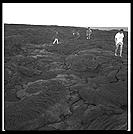
- Guide Contents:
- Reader's Comments
Medium format cameras use 120 or 220 roll film, which is about 6
centimeters wide (2 and 1/4 inches). This size of roll film was
introduced in 1898 by Kodak for its Folding Pocket KODAK Camera. It
thus seems safe to say that the world has reached agreement on the
proper height for a medium-format negative. On the other hand, nobody
has ever agreed on the proper width. There are many standard widths for
120 camera frames: 645, 6x6, 6x7, 6x8, 6x9, 6x12, and 6x17. These
numbers are ostensibly in centimeters although in practice a 6x6 camera
such as a Hasselblad will expose a 56 x 56 mm frame.
My personal choice
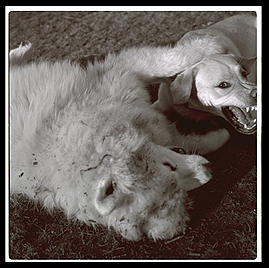 I like 6x6. I find that I take better photographs when I park the
camera on a tripod, look down onto the ground glass, and evaluate the
composition as though I were looking at a finished photo. This is known
as "waist-level viewing" and it is only really easy with a square-format
camera.
I like 6x6. I find that I take better photographs when I park the
camera on a tripod, look down onto the ground glass, and evaluate the
composition as though I were looking at a finished photo. This is known
as "waist-level viewing" and it is only really easy with a square-format
camera.
How good would your pictures be if you had to decide on the frame molding shape, frame material, mat size, and mat color at the moment of exposure? Being forced to make all of these decisions would probably distract you from making images. Part of the workload of a 35mm or 4x5 photographer is deciding whether the subject would be better served by a horizontal or vertical image. Personally, I find that my photography improves if I'm not forced to think about cropping and image ratio at exposure time. I experiment with cropping and horizontal or vertical presentation at night with the square chromes on a light table.
Some of my favorite images have turned out to be square. This is especially true when the photograph is of a pattern or a collection of objects. The viewer can see the pattern better if he or she is not hammered into thinking in one direction or another by a rectangular frame.
The folks who make Hasselblad argue eloquently for the square format in The Medium Format Advantage. One of their arguments is that you shouldn't lug around the weight of a lens that you aren't using. Lenses project circular image disks. If you park a rectangular section of film behind the lens, you're wasting much of this "circle of good definition". If you expose circular frames of film, you're wasting much of the film. If you expose square frames of film that fit exactly inside the image circle, you're not wasting any film and you're wasting as little image circle as possible. Thus the lenses for a Hasselblad (6x6) are much lighter than the lenses for any 6x7 camera.
Which 6x6 camera is best? If you're rich and strong, I like the Rollei 6008 single-lens reflex system. If you are traveling and want something light, the Mamiya 6 rangefinder system is wonderful. If you're poor, you might consider a twin-lens reflex such as the Yashica 124 or Mamiya.
| In fairness to 6x6 detractors, I'll show this photograph of Boston from the banks of the Charles River by MIT. They would say "look at all that wasted space at the bottom of the frame". The truth of the matter is that this is a terrible picture, ruined by the lack of any foreground subject. It would have been a waste of film even with my Fuji 617 camera. If you can't fill a 6x6 frame with interesting stuff then you won't have a good picture. If you are able to fill a rectangle's worth with interesting stuff, then you won't mind cropping off a bit of film. |
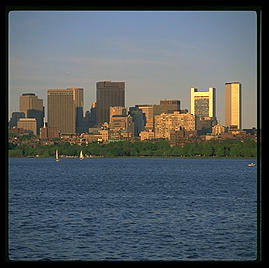
|
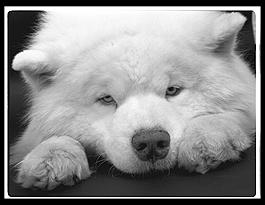 The 645 format is the smallest, lightest, and cheapest roll-film design.
Negatives are a little squatter than the standard 35mm frame (24x36mm)
and therefore full-frame printing on standard paper sizes such as 8x10
need not require a cropping decision. What you get is a sharper deeper
negative that enlarges beyond 11x14 with more grace and is easier to
handle if you do your own darkroom work. Sadly, it is also vastly more
expensive and difficult to scan than a 35mm neg, so keep that in mind if
you want to stand tall on the Web
with lots of photos.
The 645 format is the smallest, lightest, and cheapest roll-film design.
Negatives are a little squatter than the standard 35mm frame (24x36mm)
and therefore full-frame printing on standard paper sizes such as 8x10
need not require a cropping decision. What you get is a sharper deeper
negative that enlarges beyond 11x14 with more grace and is easier to
handle if you do your own darkroom work. Sadly, it is also vastly more
expensive and difficult to scan than a 35mm neg, so keep that in mind if
you want to stand tall on the Web
with lots of photos.
Fuji has done great things to promote this format. They make 645 lenses that are just as good as Hasselblad's 6x6 lenses. They charge less than half the price. Then they throw in a perfectly good body behind the lens for free! Sometimes Fuji puts a meter in the body, something that apparently costs 'Blad about $5,000 extra. Sometimes Fuji puts in an autofocus mechanism (they were the first to do so in the medium-format world). Sometimes Fuji adds a wide-to-normal zoom lens! Whatever they do, the integrated camera, body, meter, and lens costs about as much as a Hasselblad or Rollei film back.
The most collectible Fuji 645 is the old folding model with a 75mm lens. I have a GS645W from this series that takes great wide-angle pictures with a 45/5.6 lens (equivalent to 28mm in a 35mm system). The modern Fujis that you can buy from the photo.net recommended retailers operate much like 35mm point-and-shoot cameras. (See Medium Format Digest's Fuji section for more on these cameras.)
If you want something with the flexibility and features of a standard
Canon or Nikon SLR, consider the Pentax 645N autofocus system. If you
feel compelled to pay double or triple Pentax's lens prices, the Contax
AF 645 system is for you. The lenses have a Zeiss brand name, in which
I'd put little stock, especially given that they're probably made in
Japan by Kyocera/Yashica. What is intriguing is that the lenses contain
Canon EOS-style ultrasonic motors. Pentax uses the ancient
Minolta/Nikon-style screwdriver-blade-in-the-body method of autofocus.
If you don't have a flotilla of assistants, your only real options are
the Fuji rangefinders (very cheap but no meter) and Mamiya 7 rangefinder
(sort of cheap if you buy it in Asia; meter in the body and
interchangeable lenses including a delicious super-wide lens). If you
want to pretend to be a magazine portrait photographer, invest in the
unbelievably heavy and clunky Mamiya RB or RZ67 system (see
the
archived threads in the Medium Format Digest). If you want to
pretend to be a starving artistic nature photographer, throw a Pentax
6x7 II system into your beat-up full-size van. This is a huge 4-pound
SLR body that includes a prism the result is what looks like an old
Nikon on steroids. Lenses are sensibly priced.
If you already own a 4x5 view camera, a cheap way to get into 6x12 is
with a roll-film back. You're saved the hassle of loading film holders
but the other operational annyances of the view camera will still slow
you down. On the plus side, even with the very cheapest view camera and
6x12 back you get perspective control, something that will cost you
northwards of $8000 in a Linhof 612 PC outfit (includes one lens, a
Schneider 58mm XL that costs $1,213 in a view camera shutter).
With a rotating lens on a 612 camera body, you can get some very
interesting photos. The Noblex is the most common example of the
breed, producing a 146-degree photo free of distortion and light
falloff.
More
6x7
Photographers on portrait assignment for magazines often use the 6x7
format. The weight isn't a problem since they have assistants, rolling
carts, and advance planning.
6x8
Fuji makes a very interesting GX 680 III camera. It is similar in size
and weight to the huge Mamiya RB/RZ system but you get modern
electronics and the same perspective controls that you'd find on the
front standard of a view camera.
6x9
Fuji makes a rangefinders that are remarkably cheap, light, compact, and
high quality (as of 1999, you can choose between 65mm and 90mm lenses).
Regrettably they don't include a meter.
6x12
6x12 is a panoramic format that is interesting because it is the largest
hunk of roll film that will fit into a standard 4x5 enlarger. If your
ambitions stretch to larger formats, you'll be limited to contact
prints, digital imaging, or professional photo labs.
6x17
If it pains you to take more than four pictures on a roll of film, a
6x17 camera is for you. Check my Fuji
G617 review for some sample images. The right camera to buy in this
size is a used Fuji G617 (the old one without interchangeable lenses).
I got mine for $2200 in flawless condition. The things that it really
could use are perspective control and the ability to focus closer. What
the market has delivered instead are 617 cameras with interchangeable
lenses and breathtaking price tags. For the same price, you could get a
G617 and a 4x5 or 5x7 view camera system for the times when you needed a
different focal length, a closer focus ability, or perspective control.
Inspiration
I'm going to try to keep tossing in photos here that show the advantages
of various medium format cameras and image dimensions.
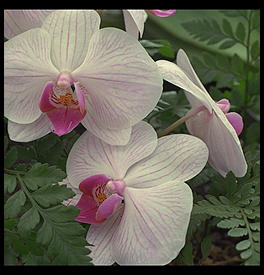
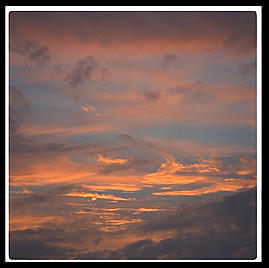
| [ top ] |